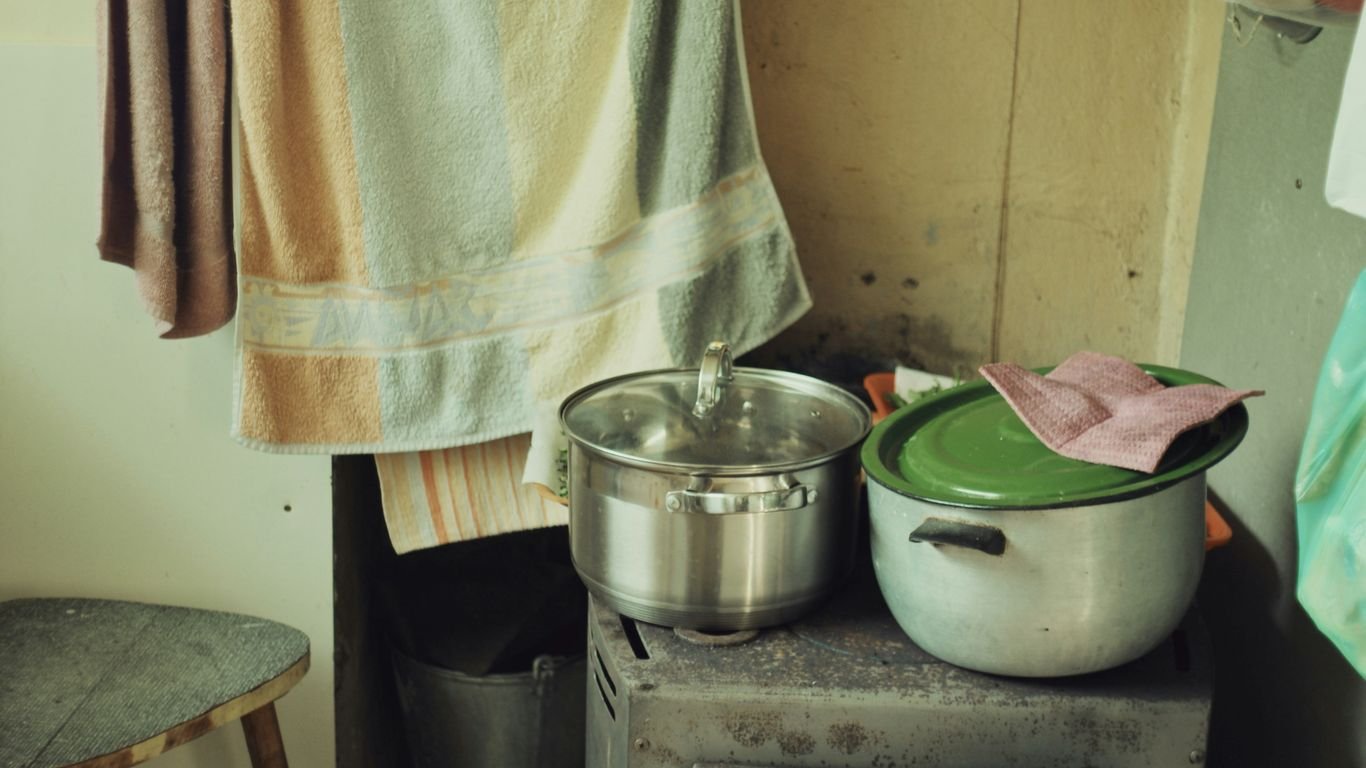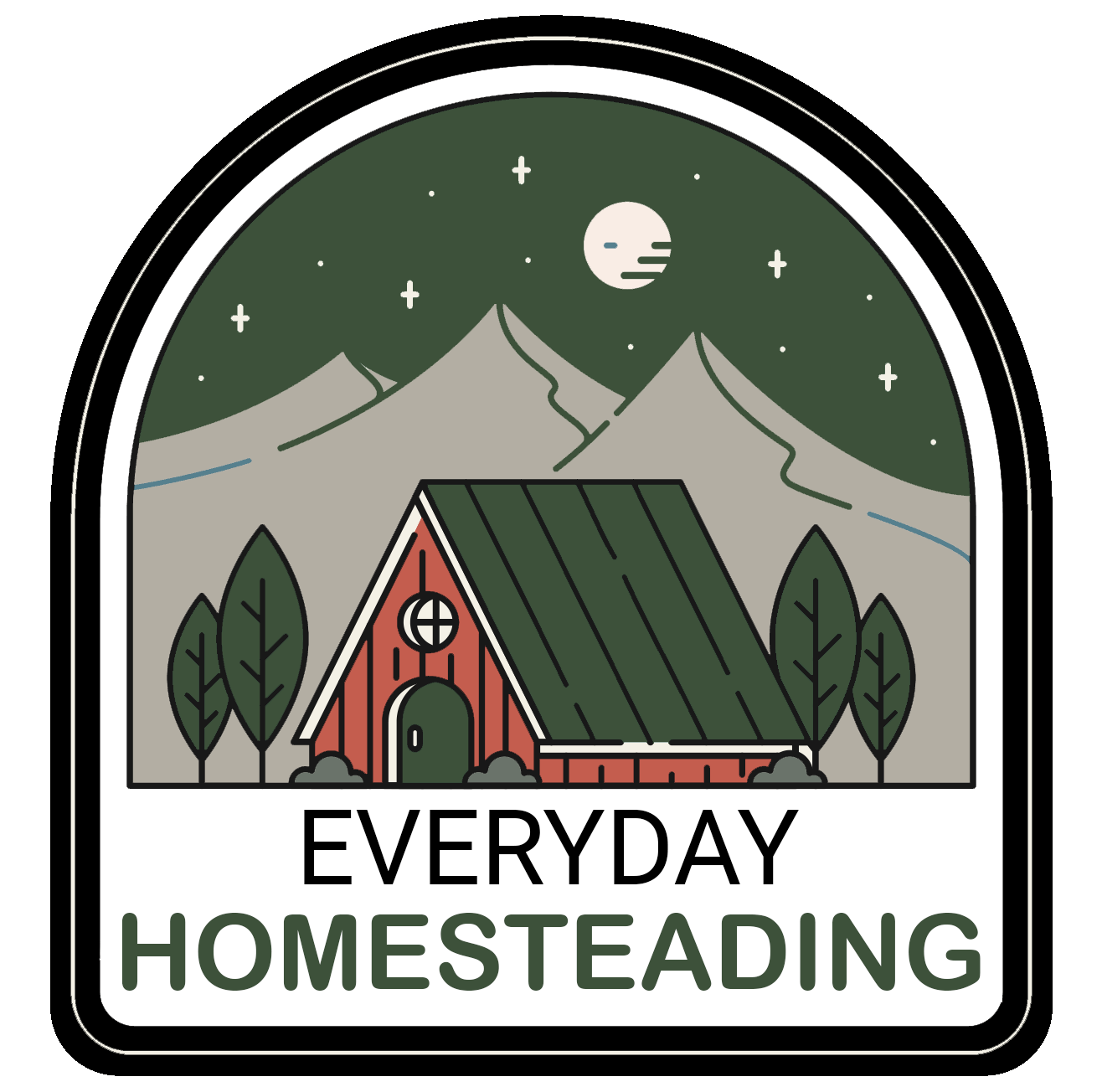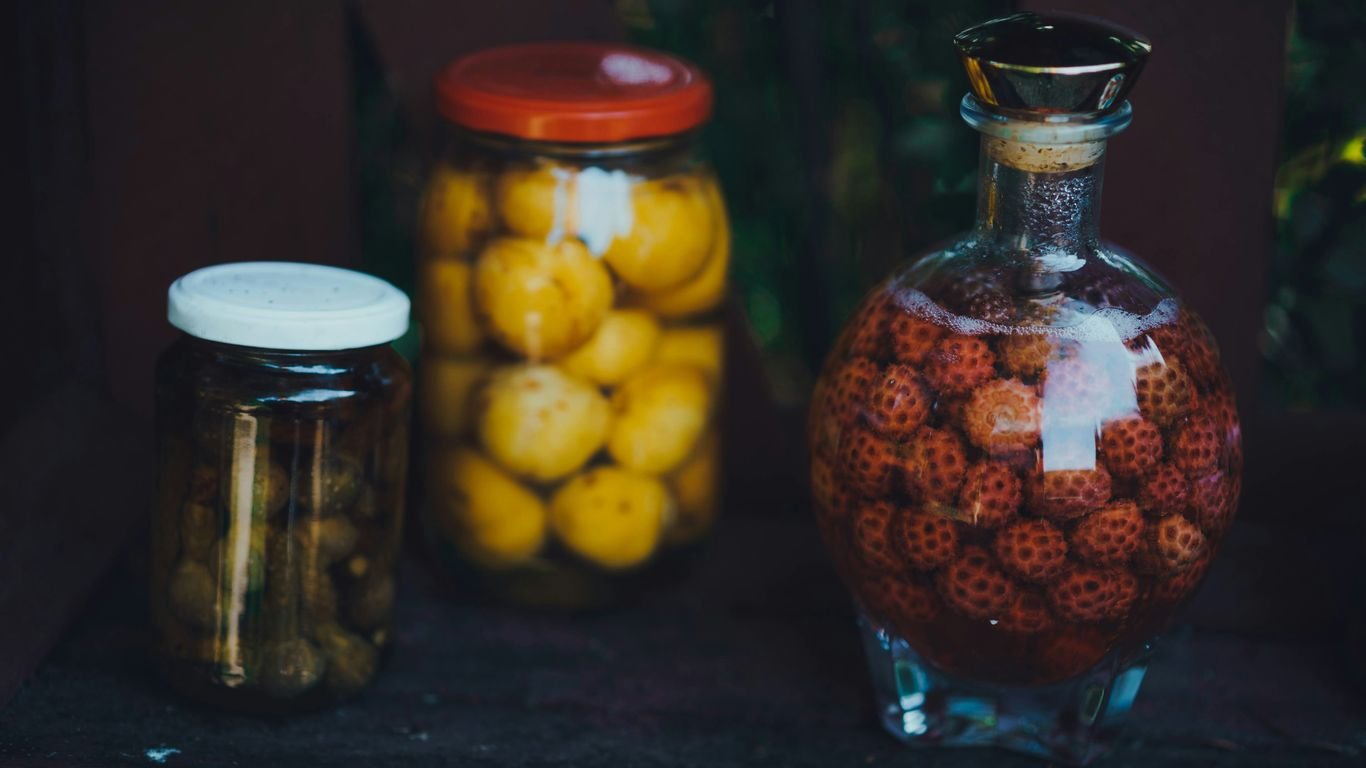Winter Pantry Prep: December to February Canning and Preserving

As the days get shorter and the weather turns cold, we often find ourselves relying more on our stored foods. Winter is a great time to think about stocking up your pantry, and winter pantry canning is a fantastic way to do just that. We can use the cooler months to prepare comforting foods that will see us through until spring. Let’s talk about how we can get our winter pantry canning projects rolling.
Key Takeaways
- Winter pantry canning focuses on preserving foods like sweet potatoes, cranberries, and beets that are perfect for cozy winter meals and holiday dishes.
- Planning is key for successful winter pantry canning; assess your needs, gather supplies, and schedule your canning projects.
- Expand your winter canning with items like citrus marmalades, canned pineapple, and even preserved meats for easy meal preparation.
- Proper storage and keeping an inventory of your canned goods are important for making the most of your winter pantry canning efforts.
- Utilize reliable resources like agricultural extensions and online guides to find safe and effective winter pantry canning recipes.
Winter Pantry Canning: Stocking Up For The Cold
As the days get shorter and the temperatures drop, it’s the perfect time to think about what we’ve preserved and what we still need for the coming months. Winter is when our canned goods really shine, providing delicious and convenient meals when fresh produce is scarce. This season is all about assessing our needs, gathering our supplies, and planning those canning projects that will see us through the cold.
Assessing Your Winter Pantry Needs
Before we dive into canning, we need to take a good look at what’s already in our pantry. What did we preserve last year, and how much did we actually use? It’s easy to get carried away during peak harvest season, but now is the time to be realistic. We should check our stock of staples like canned tomatoes, beans, and fruits. Did we run out of anything sooner than expected? Or did we end up with way too much of something we rarely used? Jotting down notes now will help us plan better for next year. Thinking about what our family actually eats is key to smart preserving.
Gathering Essential Canning Supplies
Now that we know what we need, let’s make sure we have the tools. This means checking our inventory of jars, lids, and bands. Are there any chipped jars that need to be retired from canning duty? Are the lids still in good condition? It’s also a good time to stock up on any ingredients we might need, like pectin, pickling salt, or citric acid. You’d be surprised how quickly these things can disappear from store shelves when everyone else has the same idea. It’s always better to have them on hand before the rush begins. You can find a good selection of canning supplies at most hardware stores or online retailers.
Planning Your Winter Canning Projects
With our needs assessed and supplies gathered, we can start dreaming up our winter canning projects. This is the fun part! We can brainstorm what we want to preserve based on what’s available seasonally now, or what we plan to buy in bulk soon. Think about hearty vegetables for soups and stews, or fruits that can brighten up a cold day. We can also look at recipes we want to try or revisit successful ones from previous years. Planning ahead means we’re ready to go when the produce is available, making the whole process smoother and more enjoyable. January is a great month to start planning your canning year, assessing your supplies, and preserving seasonal citrus and winter produce. Take stock of jars.
We should aim to can what we actually eat. While fancy preserves are nice, focusing on versatile staples like plain crushed tomatoes or unseasoned beans makes it easier to use them in various meals throughout the winter. It’s better to have a pantry full of usable ingredients than a shelf full of something we don’t know what to do with.
Cozy Preserves: What To Can December Through February
As the days get shorter and the air gets colder, we often crave comforting, hearty meals. This is the perfect time to turn to our pantries, and what better way to stock them than with some winter-friendly preserves? We’re talking about those shelf-stable goodies that can turn a simple meal into something special. This season, we’re focusing on root vegetables and fruits that shine when preserved.
Sweet Potatoes For Comforting Meals
Sweet potatoes are a winter staple for a reason. They’re packed with nutrients and have a natural sweetness that’s just perfect for chilly evenings. Canning them is surprisingly straightforward. You can prepare them cubed or mashed. Cubed sweet potatoes are fantastic for adding to soups, stews, or even roasting later on. Mashed sweet potatoes can be a quick side dish or a base for sweet potato pie filling. Remember, for safety, it’s best to pressure can sweet potato puree.
Cranberries For Tart Delights
Cranberries are practically synonymous with winter holidays, but their tart flavor is a welcome addition to many dishes year-round. Making cranberry sauce or jelly is a classic. We like to can ours in half-pint jars so we have individual servings ready to go. A dollop of homemade cranberry sauce can brighten up pork dishes, turkey, or even just a simple breakfast.
Beets For Vibrant Salads
Don’t underestimate the power of canned beets! They add a beautiful pop of color and a unique earthy flavor to salads. We find that pickling them slightly after canning gives them an extra zing. They’re also great on their own as a simple side dish. If you’re looking to add more vegetables to your diet during the colder months, canned beets are a convenient and tasty option. You can find great recipes for canning beets on your local agricultural extension website.
When planning your winter canning, think about the foods you crave most during this season. Comforting vegetables and fruits that can be easily incorporated into warm meals are ideal. Consider how you’ll use these preserves in the coming months to ensure you’re canning what you’ll actually eat.
Here’s a quick look at what we’re preserving this season:
- Sweet Potatoes: Cube or mash for versatile use.
- Cranberries: Sauce, relish, or jelly for a tart kick.
- Beets: Whole or sliced, perfect for salads and sides.
February is a great time to start thinking about organizing your preservation supplies and planning for the upcoming spring harvests. Getting your jars, lids, and ingredients ready now means you’ll be well-prepared for busier seasons ahead. Understanding different preservation techniques helps you make the most of your produce throughout the year, and February is an ideal time to organize preservation supplies.
Beyond The Basics: Expanding Your Winter Pantry Canning
So, we’ve covered the cozy staples, but what about pushing the boundaries a bit? Winter is a fantastic time to explore some less common, but equally rewarding, canning projects. Think beyond the everyday and add some unique flavors and textures to your shelves.
Citrus Marmalades and Curds
When the winter doldrums hit, a burst of bright citrus can be a real mood lifter. We love making marmalades and curds during these colder months. The process is a bit more involved than simple fruit preserves, but the results are so worth it. Imagine a spoonful of tangy grapefruit marmalade on your morning toast or a dollop of rich lemon curd swirled into yogurt. It feels like sunshine in a jar!
- Marmalade Tip: When making marmalade, don’t discard the pith and seeds. They contain pectin, which helps the marmalade set. You can tie them in a cheesecloth bag and simmer them in the mixture, removing them before jarring.
- Curd Caution: Curds are typically made with eggs and butter, so they require water-bath canning for safety. Make sure your recipe is specifically designed for canning, as fresh curds are not shelf-stable.
Canned Pineapple for Tropical Touches
Who says winter has to be all about root vegetables and berries? We’ve found that canning pineapple is a surprisingly simple way to bring a taste of the tropics to our cold-weather meals. It’s perfect for adding to stir-fries, desserts, or even just enjoying straight from the jar. It’s a little bit of unexpected sunshine when you need it most.
We found that using a light syrup makes the pineapple taste fresher and less cloyingly sweet.
Preserving Meats for Easy Meals
This might sound a bit more advanced, but canning meats is a game-changer for busy winter evenings. Having jars of pre-cooked chicken, beef, or even broth ready to go means you can whip up a hearty soup or a quick stew in minutes. It takes a bit more planning and the right equipment – specifically a pressure canner is a must for low-acid foods like meat – but the convenience is incredible.
Canning meat requires a pressure canner because it needs to reach temperatures higher than boiling water to be safe. Water-bath canning is only suitable for high-acid foods. Always follow tested recipes for canning meats to avoid any risks.
Here’s a quick look at what you might consider:
- Chicken: Great for quick chicken noodle soup or adding to casseroles.
- Beef: Perfect for stews, pot pies, or even shredded beef sandwiches.
- Broth/Stock: A foundational ingredient for countless winter dishes. You can find great resources for safe canning recipes online.
Expanding your canning repertoire in winter means you’re not just preserving the harvest; you’re building a more versatile and convenient pantry for the entire year. It’s about adding those little luxuries and practical solutions that make winter cooking a breeze.
The Canner’s Year: Winter Prep And Planning

Winter is a fantastic time to reflect on our canning adventures and get a head start on the year ahead. It’s the season for dreaming up new recipes and making sure our pantries are ready for whatever the next harvest brings. We can use this quieter time to really think about what we want to preserve and how we can make our canning efforts even better.
Brainstorming Your Canning Wish List
Now is the perfect moment to jot down all those delicious ideas. Think about what your family actually eats and what you might need more of. Did you run out of pickled beets too early? Or maybe you wished you had more canned peaches for winter breakfasts? It’s all about planning to can what you love to eat. Don’t just can things because they look pretty; focus on the staples that will truly make your meals easier and tastier throughout the year. We can look through cookbooks or browse online for inspiration, but remember to prioritize items that are versatile. For instance, canning plain crushed tomatoes is often more useful than a pre-made, specific sauce, as you can adapt it to many dishes.
Reviewing Last Year’s Canning Successes
Take a moment to think back on the past year. What canning projects went off without a hitch? What recipes were a huge hit with everyone? It’s also important to note what didn’t quite work out. Maybe a certain jam was too sweet, or a batch of pickles didn’t have enough crunch. Jotting these things down, perhaps in a dedicated canning journal, helps us learn and improve. We can even make a note to never can that one experimental salsa again if it was a flop!
Setting Goals For Your Winter Pantry
With our wish list and review in hand, we can start setting some concrete goals. How many jars of each item do we aim for? Do we want to try a new preservation technique, like making fruit leather or canning meat? It’s also a good time to check our supplies. Do we have enough jars, lids, and rings? Are we running low on pickling salt, pectin, or citric acid? Getting these non-perishable items now, before the busy season hits, can save us a lot of stress. We can also think about storage space. Having a well-organized pantry makes finding what we need so much simpler. A good place to start looking for safe canning practices is this guide.
Here’s a quick look at what we might focus on during the winter months:
- Inventory Check: Count your jars, bands, and lids. Replace any that are damaged.
- Supply Stock-Up: Purchase any canning spices, sugar, pectin, or other ingredients you’ll need.
- Recipe Roundup: Gather and organize recipes for the upcoming canning season.
- Equipment Maintenance: Clean and store your canners and other tools properly.
Planning your canning year is like setting a course for a delicious journey. It helps us make the most of our harvests and ensures we have a well-stocked pantry ready for any occasion. Being prepared means less stress and more enjoyment when the peak season arrives.
Making The Most Of Your Winter Canning Efforts
Now that we’ve spent time canning throughout the colder months, it’s time to really make sure all that hard work pays off. We want to enjoy the fruits (and vegetables!) of our labor, right? So, let’s talk about how we can best store and keep track of everything we’ve put up.
Storing Your Canned Goods Properly
Proper storage is key to keeping your canned goods safe and tasty. We need a cool, dark, and dry place. Think basement, a cool closet, or even a dedicated pantry shelf. The ideal temperature is between 50-70°F (10-21°C). Avoid storing jars near heat sources like stoves or in direct sunlight, as this can degrade the food and potentially compromise the seal. Make sure your storage area is free from pests too. We don’t want any unwanted visitors helping themselves to our preserves!
Keeping An Inventory Of Your Pantry
This is where things get organized. Keeping a running list of what you’ve canned, how much you have, and when you canned it is super helpful. It stops us from forgetting about those jars tucked away in the back. We like to use a simple notebook or a spreadsheet for this. It helps us see what we’re running low on and what we have in abundance. It’s also a great way to track your successes and figure out what you might want to can more or less of next year. Here’s a quick look at what our inventory might track:
| Item Canned | Quantity | Date Canned | Notes |
|---|---|---|---|
| Cranberry Sauce | 6 pints | 12/15/2025 | Extra ginger added |
| Pickled Beets | 4 quarts | 11/20/2025 | Used red wine vinegar |
| Sweet Potato Puree | 8 half-pints | 1/10/2026 | For baby food |
Enjoying Your Home-Canned Treasures
This is the best part, isn’t it? Using the food we’ve preserved! Don’t let those jars just sit there. Plan meals around them. That cranberry sauce isn’t just for Thanksgiving; it’s great with pork chops in February. Those pickled beets can liven up a winter salad. We find that incorporating our canned goods into our regular meals makes them last longer and reminds us of the effort we put in. It’s a real treat to pull out a jar of something delicious that we made ourselves, especially when the weather outside is frightful. It’s also a great way to share seasonal food with friends and family, especially around the holidays.
Remember to always check the seals on your jars before opening. If a lid is popped up or the seal looks compromised, it’s best to discard the contents to be safe. A quick tap on the lid should produce a solid sound; a dull sound can indicate a broken seal.
Winter Pantry Canning: Recipes And Resources
Finding reliable recipes is key to successful canning, especially when we’re stocking up for winter. We want to make sure everything we put up is safe and tastes great when we finally open those jars months down the line.
Finding Safe And Reliable Canning Recipes
When we’re looking for recipes, especially for things like sweet potatoes or cranberries, we always start with trusted sources. It’s really important to use tested recipes from reputable places. Sometimes, you might find a recipe online that looks amazing, but it hasn’t been properly tested for canning safety. We’ve learned that sticking to established guidelines prevents a lot of potential problems.
Here are a few places we always check:
- Our local agricultural extension office: These folks are usually full of amazing, localized information and can point us to the best resources for our area. They often have workshops too!
- University Extension websites: Many universities have food preservation departments that offer free, tested recipes and guidelines. They are a goldmine of information.
- Reputable canning cookbooks: Books from well-known authors or organizations that focus on food preservation are usually a safe bet. We like to have a few on hand.
Utilizing Your Local Agricultural Extension
We can’t say enough good things about our local extension office. They are such a fantastic resource for all sorts of home economics, including canning. They often have specific advice for our region and can help us understand the nuances of canning different types of produce. If you’re unsure about a specific fruit or vegetable, or even a particular canning method, they are the first people we’d recommend calling. They can also be a great source for understanding local food availability, which ties into planning your canning projects for the year. You can usually find your local office by searching online for "agricultural extension office" plus your county or state.
Leveraging Online Seasonal Food Guides
Knowing what’s in season is half the battle when it comes to canning. We love using online seasonal food guides to get a general idea of what produce is at its peak. This helps us plan our canning projects throughout the year, not just in winter. For example, knowing when cranberries are best allows us to plan our cranberry sauce or relish canning for that time. These guides can also help us discover new produce we might not have considered canning before. A quick search for a "seasonal food guide" can give you a great overview of what to expect and when.
When we’re planning our canning, we try to focus on staples that we know we’ll use regularly. While it’s fun to try new things, having a good stock of versatile items like canned vegetables or fruits means we’re more likely to actually eat what we preserve. It’s better to have a lot of something we’ll use than a little bit of something we might not.
Wrapping Up Our Winter Preserving
So there we have it! We’ve spent the last few months getting our pantry stocked with all sorts of goodies. It feels good, right? Knowing that we have jars of deliciousness ready to go, even when the garden is sleeping. Remember, this whole canning thing is a journey. Some things will work out perfectly, and others… well, maybe not so much. Don’t be afraid to jot down what worked and what didn’t. And as the days start to get longer and we see those first sprouts, we’ll be ready to do it all over again. Happy preserving, everyone!
Frequently Asked Questions
Why should we focus on canning between December and February?
During these colder months, we often find ourselves needing hearty and comforting foods. Canning during this time lets us preserve root vegetables like sweet potatoes and fruits like cranberries that are perfect for winter meals and holiday treats. It’s a great way to use what’s available and ensure we have delicious food ready to go.
What are some good things to can during the winter months?
We love canning sweet potatoes because they make comforting side dishes and additions to casseroles. Cranberries are fantastic for making sauces and relishes that go perfectly with holiday meals. Beets are also a great choice; we can them to add vibrant color and flavor to our salads all winter long.
Can we preserve citrus fruits in the winter?
Absolutely! Winter is the perfect time for citrus. We can make bright and zesty marmalades and tangy curds from oranges, lemons, and grapefruits. It’s a wonderful way to capture that fresh, sunny flavor when everything else is cold outside.
Is it possible to can pineapple during winter?
Yes, we can certainly can pineapple! While it might not be a typical winter fruit in many places, we can still find it and preserve its tropical sweetness. Canning pineapple allows us to add a taste of sunshine to our meals, even in the middle of winter.
What about preserving meats for winter meals?
Preserving meats is a smart move for winter. We can pressure can things like chicken, beef, or pork. This makes it super easy to have a protein source ready for quick dinners, soups, or stews without having to thaw something from the freezer.
How do we know what to can and when?
We like to plan our canning year-round. In winter, we brainstorm what we ate and what we ran out of from the previous year. We also look at what’s in season or available at good prices. Having a plan helps us make sure we’re preserving the foods we’ll actually use and enjoy throughout the cold months.






